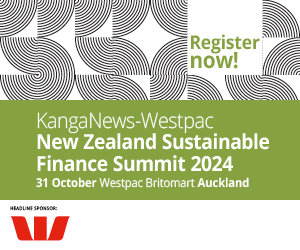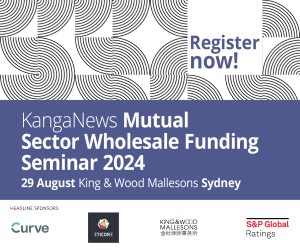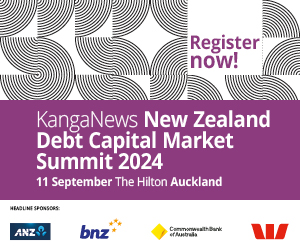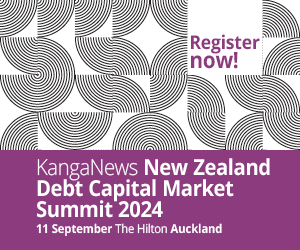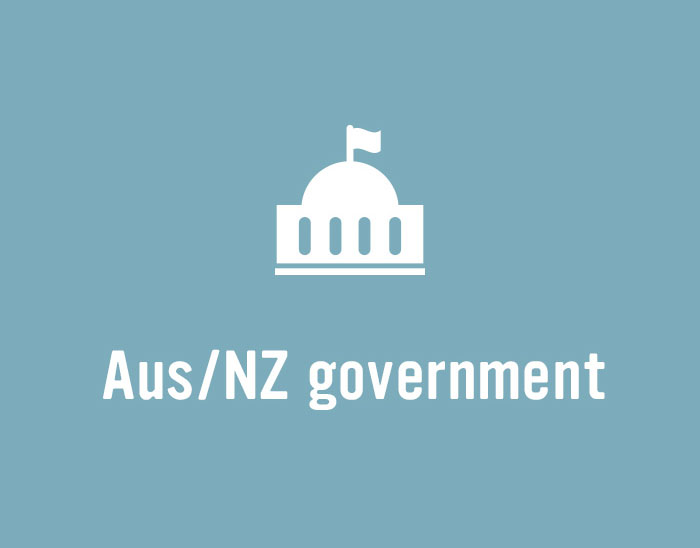
Government-sector issuers roundtable part one: Australian perspectives
In January 2018, KangaNews invited representatives of Australia’s biggest government-sector funders to a roundtable discussion in Sydney. In the first part of the discussion, the issuers shared insights into the global funding environment, global investor demand and their own ambitions with respect to curve duration.

MARKET CONDITIONS AND DEMAND
Davison Perhaps we can start with issuers’ review of funding conditions during 2017. Markets in general were very benign, but how was this reflected in demand for Australasian high-grade bonds?
Calendar 2017 was also one of our busiest years for investor engagement. We consistently heard from investors that they weren’t concerned about the Australian sovereign being placed on negative outlook by S&P Global Ratings, which confirmed once more in our mind that offshore participation is driven primarily by yield and liquidity.
ACGB spreads to US Treasuries (USTs) remain a key factor for some investors though, and have contracted quite significantly at times, especially in the second half of 2017. A few investors have suggested that if the ACGB curve gets too flat to UST they may stop buying while they look to the market to reprice – but none have suggested that they would necessarily start selling as a result.
The final thing I’d note is the shape of the ACGB curve towards the end of 2017. I think it’s fair to say that other sovereign curves have flattened more than ours, and some investors expect to see further flattening of the ACGB curve in time. This expectation seems to be borne out by ongoing interest in the ultra-long end of the curve.
Since then, we have topped up our 2030 benchmark bond via syndication and issued a new 2029 benchmark bond – with both transactions being oversubscribed and very well received in the market. We continued to increase the amount outstanding in various benchmark bond lines, primarily via taps but also by tender. Going into 2018, we have been encouraged by very positive new-issuance volume in the first few weeks of the year.
In the context of these factors, well-rated Australian and New Zealand issuers remained one of the highest-quality credit groups in global capital markets. With this as the background, demand for high-quality Australian credit remains very strong.
Credit has clearly repriced and tightened over the last 12 months and the market’s appetite to embrace credit – whether in fixed-income or equity markets – appears to be insatiable. There is global uncertainty in some jurisdictions and currencies, but this is why investors continue to support Australasian credits which have a proven track record of stability and certainty.
Our focus in recent months has been on extending our yield curve. We increased our 2040 by A$200 million, did a A$100 million 2047 issue and also increased the outstanding volume of our 2032 quite significantly. Conditions were also very favourable for this type of semi-government issuance. The only caveat is that our spreads had widened somewhat in expectation of the return to term issuance – while still being very attractive on an outright basis.
Australian issuers and global relative value
It remains to be seen how global demand for Australian assets will evolve in the next phase of the rates cycle. So far, issuers say the erosion of Australia’s global yield advantage has not cost them excessively.
COLLARD Even though Export Finance and Insurance Corporation (Efic) did not engage in any term funding during calendar 2017, we continued to receive reverse enquiry from existing and, more importantly, new investors looking to buy Efic debt in Australian dollars and foreign currencies. There are two parts to the investment decision – the return and the credit. Investors are happy with the credit and perhaps they previously saw higher outright interest rates as some sort of ‘arbitrage’ for buying Australian dollar product.
Now the US yield curve is steepening, this overcompensation isn’t necessarily going to be there. But I don’t think this will bring about a decrease in demand for Australian credits because of the quality of the bonds that debt investors are putting onto their balance sheets.
The subtle change in demand patterns is, I think, the strength of demand for 10-plus year paper – especially from offshore investors. Our landmark transaction in 2017 was a 2030 maturity, which attracted 40 per cent offshore distribution. This is higher than our recent experience in syndicated trades.
We were also able to issue a new 2047 line in 2017, the outstanding volume of which is now at A$250 million. In addition, we continue to tap into our euro-denominated 2046 bond. There’s no doubt that we could have issued a lot more long-dated paper had we had further need from our clients.
The only thing that was a little different for South Australian Government Financing Agency (SAFA) was that we experienced some political overhang from the question of whether the state would introduce a bank tax. This made us a little cautious about market entry in the second half of calendar 2017. Given the tax is now off the table we believe we are back to having good market access, as proved to be the case when we issued in December.
Davison What sort of feedback have issuers received that might explain the strength of demand from, in particular, offshore investors in 2017?
Davison How likely are issuers to flex issuance into the long end to take advantage of demand?
Davison TCorp and TCV have both had periods of low or zero new-issuance requirements thanks to the proceeds of state asset transactions. Did these issuers have capacity to take advantage of good market conditions on the basis that term funding was always set to resume at some stage?
The asset-lease transactions by the New South Wales (NSW) government saw a requirement for more aggressive liability management despite the overall low net funding requirement. We saw market opportunities to issue and we are able to warehouse risk on our balance sheet. We can prefund when we feel it is appropriate to do so.

Davison Are there any other thoughts on prefunding to take advantage of positive issuance conditions?
We were prepared to carry larger cash balances when funding tasks were increasing and the market outlook was distinctly more risky. It’s a different story now, especially given declining issuance and the fact that we are the other side of some significant market-risk events in Europe. This leaves us somewhat more circumstance-specific about prefunding over the coming few years.
FINDING DEMAND
Davison The net new-issuance outlook for the Australian government sector – broadly sovereign down, states up – is a dynamic the market hasn’t been seen for many years. What considerations does this bring for issuers?
Queensland Treasury Corporation (QTC) had early maturities this financial year – in September 2017 and February 2018 – so we got well ahead of our issuance programme. In general what we’ll be watching for is whether execution windows get more crowded. We might start to see a greater number of syndications as they are coming from a range of semis, rather than issuance concentrated to some degree into a small number of very large ACGB syndications.
We have already seen SAFA and Tasmanian Public Finance Corporation announcing syndications in 2018, and we are only two weeks into the new year as we speak.
From our perspective, a factor that’s worth noting is that, as our supply increased and that of the semis fell over the past two years, there has been increased absorption of our paper by domestic bank balance sheets.
It’s no secret that the local banks began accumulating semi-government bonds well ahead of ACGBs – for the obvious reason of yield. But there was a noticeable increase in ACGB uptake as this sector’s level of ownership of the semi sector increased and semi supply decreased. I don’t expect this story to reverse as supply dynamics change, and overall I think the impact will be close to neutral.
Davison This raises the question of who will be the marginal buyer of new semi-government issuance. The last time the states faced a collective large increase in their funding tasks they were assisted by the implementation of Basel III liquid-assets rules in the Australian banking sector. From where will the marginal investment dollar come this time?
At the same time, we have also seen offshore interest coming through, particularly out of Japan but also throughout Europe. Having this demand as well as the domestic bid is important for us, and it also highlights the need to get on the road and see investors face-to-face.
One area where we have attracted new investors is through our debut green-bond transaction, which we priced in 2017. This brought specifically green-mandated investors to our books for the first time, which was certainly a positive outcome.
I should also note, though, that our established balance-sheet investors will have to reinvest their funds and we expect this to continue to be supportive of demand. QTC has negative new issuance in the current financial year - we have A$9 billion of maturities and A$7 billion of expected issuance.
We are probably still at the low end on the scale of offshore holding among our peers – at around 20-25 per cent – so there is still work to do. But going offshore to meet investors, wherever they may be, has been part of our programme for some time now and will continue going forward.
We are also seeing growing interest out of Europe, as well as from the Asian region that has been a good supporter of Australian semis for many years. One area that has been lacking in recent times has been the US, though we have seen glimmers of demand from there recently.
Australian credit in depth
Australian semi-government issuers say global investors tend to be satisfied with a broad overview of their credit stories. While a strong federal-state relationship is important, most buyers do not require an intimate understanding of the minutiae of how the linkage works.
Cinquina I think it’s still important to tell the Australian state credit story to offshore investors. This doesn’t necessarily mean the specifics of GST, but the fundamental nature of the federal-state relationship and the way it provides part of the states’ strength is crucial.
The Australian Office of Financial Management does a great job of marketing Australia, of course, but as states we still have to tell our part of the story. GST is just a corollary of this – a part of the story.
The reality is that at any time around 50-60 per cent of each state’s revenue comes from the federal government. At the same time, we also need to recognise that we aren’t always talking to the same individual at any specific investor – for example, personnel turnover in the central-bank sector in particular tends to be on a 12-24 month cycle. So we have to keep telling the story.
Davison QTC has actively pursued US demand by adding 144A language to its programme. What is QTC’s perspective on US demand?
However, when US investors come in they tend to do so in reasonable size. We continue to find the 144A component a useful tool to have within our programme.
Davison Which regions are providing the most positive demand story?
Davison Are you talking about Australian dollar-denominated insurance assets?
Going back to the US, I think there may be a change coming based on what’s happening in the regulatory space. A lot of global funds are now being run by US fund managers rather than out of the UK or Europe, largely as a product of MiFID reporting rules.
This means more active involvement from these underlying funds than was previously the case, but also a new ability to invest in primary – because they are global, rather than US, portfolios. At the margin, I expect we will see more tickets coming from the US though often the underlying assets will be Asian or European in origin.
EXTENDING TENOR
Davison Now the 30-year point has been established, can we assume the period of AOFM curve extension is finished?
We continue to be very active in the long end. Since we syndicated the 2047 ACGB we have tapped it for around A$4 billion, to A$11.6 billion, and we have also done taps in the 20-year part of the curve to the tune of around A$5 billion so far in fiscal 2017/18. We plan to continue issuance of this type but will be mindful of the need to support liquidity across the curve.
We haven’t committed to issuing a new 30-year bond every two years – the best timing for this is under active consideration. Market feedback suggests it is better to have a small number of liquid lines than several smaller lines, and obviously at that duration the difference between a 2047 and a 2049, for instance, is not material. Over time, it’s possible that ACGBs issued at 30-year tenor will become less actively traded until reaching the 20-year futures basket. We already see this dynamic between other futures baskets.
Davison Does the AOFM have a specific strategy in place to maintain weighted-average maturity (WAM) as its issuance task eases?
We have not overlooked the question of how we support the market in the context of declining issuance programmes. The buybacks we are conducting are not specifically about maintaining WAM – though this will be a result. The main thing for us will be how we allocate issuance to support the different components of the investor base across the curve.
Davison Front-end buybacks and lower issuance by the AOFM have led some market participants to predict the end of the basket trade. Does supporting different aspects of market demand extend to technical factors like this?
We usually fund the buybacks by issuing basket stocks and supporting the futures contracts is undoubtedly a higher priority for us than promoting liquidity in the very short end. We continue to monitor liquidity across the curve, though, and have consistently made clear that we can change our practices accordingly.
Davison How, if at all, do changes in sovereign liquidity and issuance dynamics across the curve affect the market for semis?
I’d note that the work the AOFM has done in recent years to extend the yield curve has definitely allowed the semis to go out further in tenor. The semi market now goes out to 15 years in Australia, and I don’t think we could have said this even six months ago. Whether we can fill the gap between 10 and 15 years in benchmark size is still to be determined, but we are testing this – and we would also like to look at 20-30 years in due course.
We might see benchmark ACGBs becoming A$10-12 billion in size rather than A$14-16 billion, but there can and will still be good liquidity in these lines.
We will likely issue a new five-year floating-rate note and a 2028 benchmark in the first half of calendar 2018, which we have communicated to the market. We have also had some internal discussion about potentially doing something a little longer than 10 years. This will push our WAM out slightly, but given the demand of our client borrowers this is likely to be the extent of our duration ambitions.
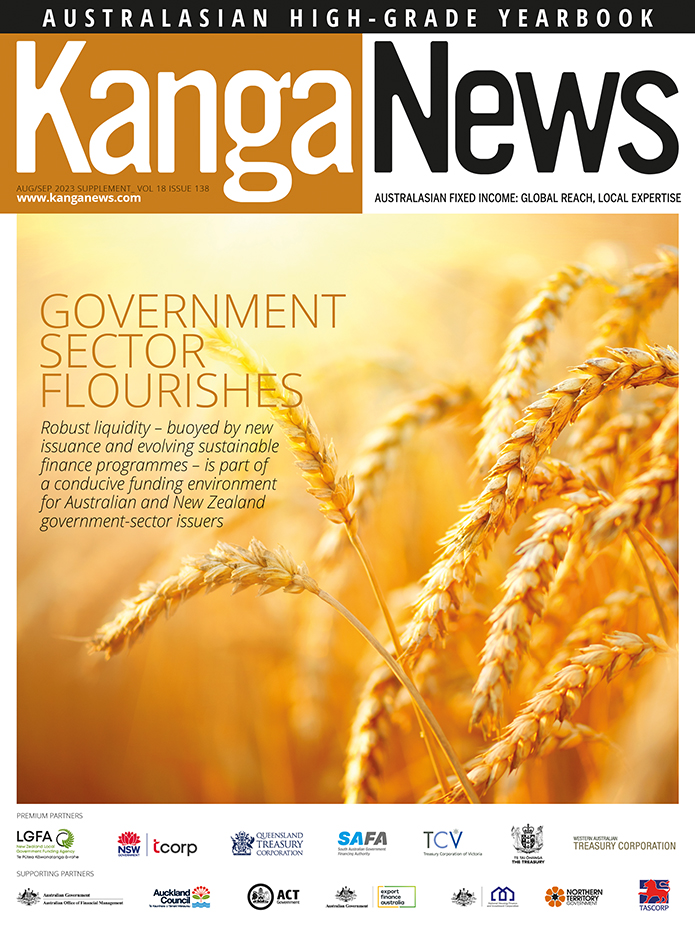
HIGH-GRADE ISSUERS YEARBOOK 2023
The ultimate guide to Australian and New Zealand government-sector borrowers.
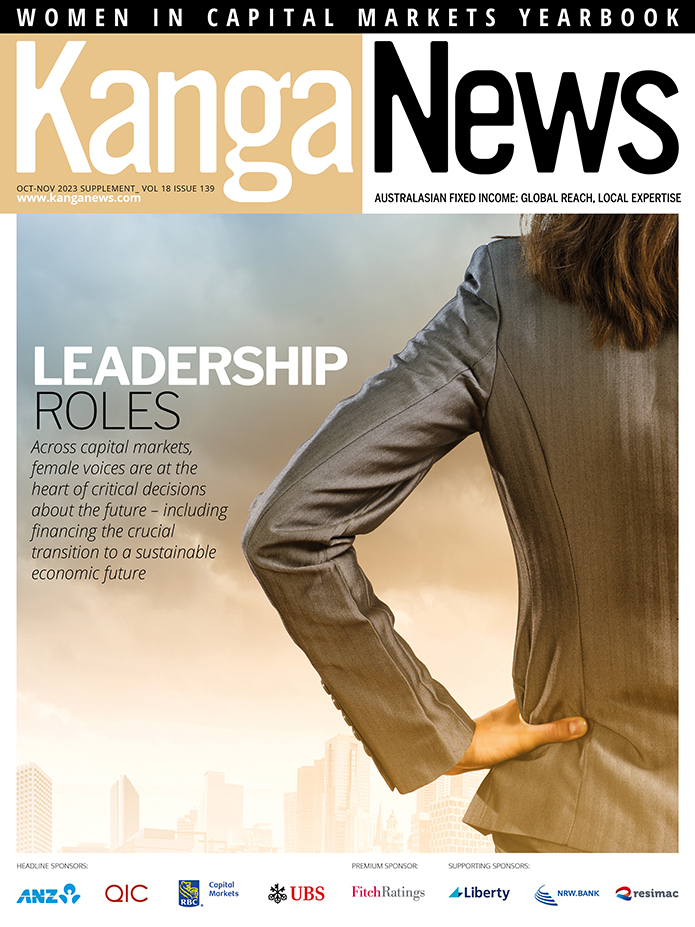
WOMEN IN CAPITAL MARKETS Yearbook 2023
KangaNews's annual yearbook amplifying female voices in the Australian capital market.



